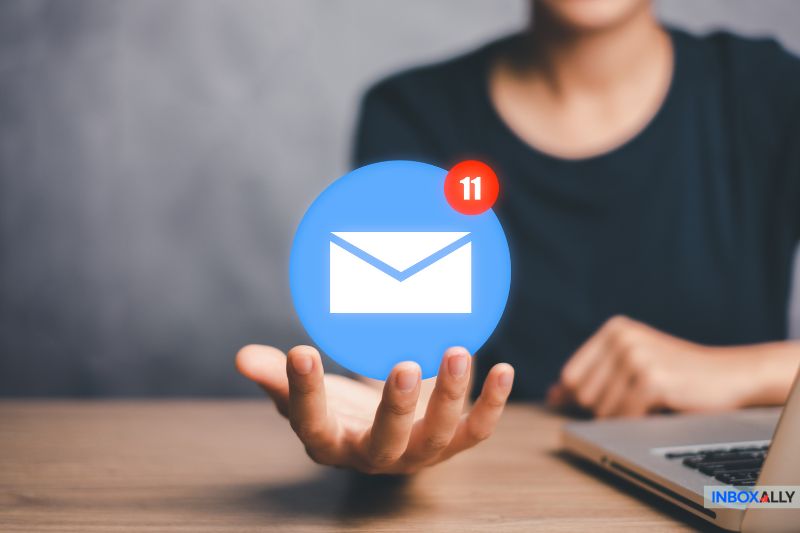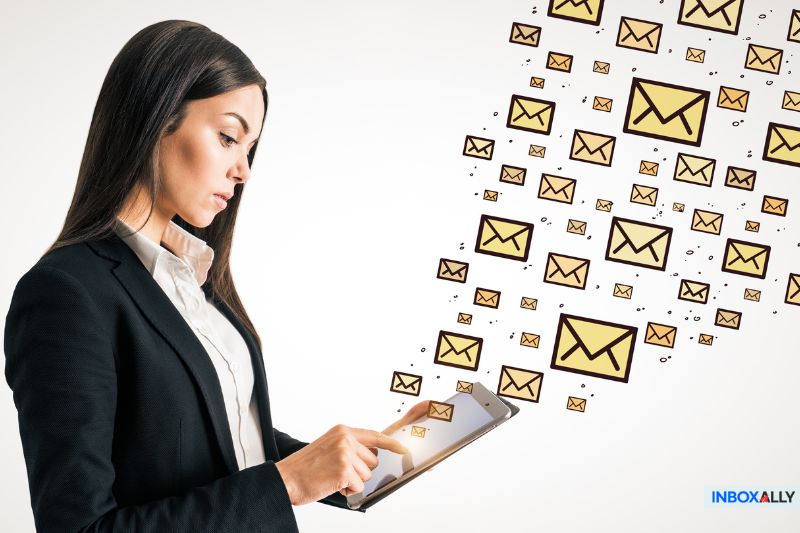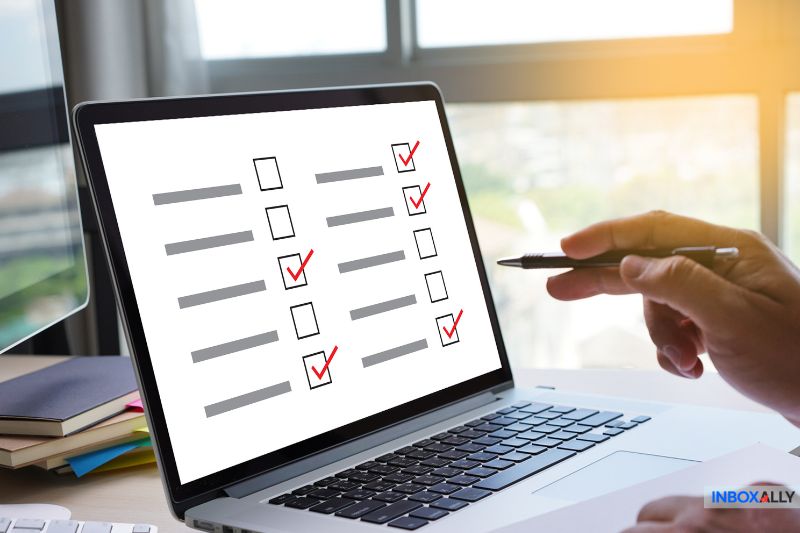In 2025, email marketing isn’t just alive—it’s thriving. With email volume up by nearly 25% since 2018, it’s clear that emails are here to stay. But, as every marketer learns sooner or later, more isn’t always better. So, how do you find the sweet spot when it comes to your own campaigns?
Unfortunately, there’s no universal recipe. Email frequency is a balancing act—a delicate dance between staying top-of-mind and not becoming that brand people would rather not hear from.
The magic number really depends on your audience, your industry, and your goals. In this article, you’ll learn how to nail the perfect email cadence and keep your subscribers engaged—without tipping them into email overload. Let’s dive in!
Why Email Frequency Matters More Than You Think
![]()
Email marketing frequency, like most things, requires the right balance—send too many, and your subscribers might feel like they’re avoiding a pushy telemarketer. Send too few, and you risk becoming that friend who only calls when they need a favor. Neither extreme ends well.
Over-emailing can lead to higher unsubscribe rates as overwhelmed subscribers start jumping ship. It can also trigger spam complaints, tarnish your sender reputation, and even land your emails in the dreaded spam folder.
On the flip side, going silent for too long can leave subscribers wondering, Who’s this again? Worse yet, they might mistake your next email for spam.
Thoughtfully timed communication keeps you connected to your audience—simple as that. It transforms every email into an opportunity to strengthen relationships, inspire action, and make your brand unforgettable. Why let those chances slip by?
What Shapes the Perfect Email Frequency?
The perfect email frequency depends on many factors. What resonates with one audience might completely fall flat with another. So, what influences how often you should reach out?
1. Industry Expectations
Different industries set different norms for email frequency. For example:
- E-commerce: Daily emails announcing flash sales or new arrivals often work well for highly engaged customers.
- Professional services: Subscribers tend to prefer less frequent updates, like monthly newsletters filled with expert insights.
- Nonprofits: Regular updates strike a balance—keeping supporters informed without overwhelming them.
Understanding these expectations helps ensure your emails feel timely, and not intrusive.
Understanding these expectations helps ensure your emails feel timely, and not intrusive. Checking out insightful email marketing blogs can provide valuable strategies for optimizing your email frequency and engagement.
2. Audience Size
The size of your email list also matters. Smaller lists (under 2,000 subscribers) benefit from fewer, more targeted emails to avoid fatigue and high unsubscribe rates. Larger lists, particularly in e-commerce, can often support frequent communications. That said, keep an eye on attrition: if new sign-ups aren’t replacing unsubscribes, it might be time to dial back.
3. Types of Emails
Each email serves its own purpose, and its optimal frequency often depends on the type:
- Transactional Emails: Triggered by actions like order confirmations, these are expected and should be sent whenever needed.
- Newsletters: Typically sent weekly, bi-weekly, or monthly, they deliver valuable updates on a consistent schedule.
- Promotional Emails: These require some thought—too many can frustrate subscribers, while too few could mean missed conversion opportunities.
This isn’t a definitive list, but the idea remains the same: email type is yet another variable in the already complex topic of email frequency.
4. Engagement Metrics
Your audience’s behavior is your best guide. Open rates, click-through rates, and unsubscribe rates tell you what’s clicking with your audience and what’s not. High engagement means you’ve found a rhythm; a decline signals the need to adjust.
Align your sending frequency with these variables, and you’ll put your best foot forward in staying relevant without overstepping. Stay attuned and adapt as needed, and your emails will always feel like a welcome presence in the inbox.
Red Flags That Say You’re Over-Emailing
There’s no magic number to guide you, but a few telltale signs can help you navigate the fine line of over-emailing. Knowing when you’ve crossed it is key to keeping your email strategy sharp and your audience engaged. So, what should you watch out for?
High Unsubscribe Rates and Spam Complaints
If unsubscribe rates spike or subscribers start marking your emails as spam, it’s a clear signal you’ve pushed too far. These issues reduce your list size and can also harm your sender reputation, making it harder for your emails to reach inboxes.
Sender reputation isn’t always entirely your fault, though. Sometimes your ESP (email service provider) can falter, making your email marketing campaign look bad and that’s where InboxAlly can make a huge difference.
By simulating real user interactions—like moving emails out of spam, marking them important, and clicking links—InboxAlly boosts deliverability and ensures your emails land in your recipients’ inboxes every time. Make sure to check it out!
Declining Engagement Metrics
When open rates and click-through rates (CTR) drop, it’s a sign that subscribers are losing interest. This could mean they’re overwhelmed by frequency or that your content no longer resonates. Either way, it’s time to reassess your strategy.
Spam Filters Flagging Your Emails
Frequent or repetitive emails increase the risk of being flagged by spam filters, which can devastate your campaigns. If multiple providers start marking your emails as spam, it’s yet again a red flag to rethink your approach.
Diminishing Returns
Diminishing returns happen when increasing your email frequency starts to work against you. Instead of boosting engagement, each additional email holds less value with fewer opens, clicks, and responses. Over time, what was once effective can become noise in your subscribers’ inboxes.
It all comes down to balance—watch your metrics, pay attention to your audience, and slow down when the warning signs appear. Over-emailing can easily undo the trust and engagement you’ve worked so hard to build.
How to Find the Perfect Email Cadence
Finding the right email cadence is equal parts instinct and data, and a few tried-and-true strategies can help steer you in the right direction. Your results may vary, but these are some of the most common approaches to try when deciding how much is enough:
1. Start with a Baseline
For many businesses, emailing once or twice a week is a reliable starting point. This frequency keeps you on your audience’s radar without overwhelming them. Watch engagement metrics like open rates, click-through rates (CTR), and conversions—if they’re steady or improving, you’re on the right track.
And if those engagement metrics could use a boost, InboxAlly is here to help. It optimizes your email performance while maintaining strong deliverability, so no opportunity slips through—give it a try!
2. Let Your Subscribers Decide
Why guess when you can ask? A preference center lets subscribers set their preferred email frequency—weekly updates, bi-weekly newsletters, or monthly digests. Giving your audience control improves engagement, reduces complaints, and helps them trust you more.
3. Use Regression Analysis
Take a data-driven approach with regression analysis. By analyzing historical metrics like open rates, CTR, and conversions, you can pinpoint patterns that reveal your optimal cadence. Tools like Excel or statistical software make it easier to predict and adjust frequency based on audience behavior—so put them to work for you.
4. Segment Your Audience
Not all subscribers want the same thing, which is why segmenting your list helps you add a personal touch. Your segmentation could be based on criteria like:
- Purchase history
- Location
- Device Usage
- Engagement levels
- Abandoned Cart
This approach lets you cater to everyone. For example, active shoppers might want frequent promotional emails, while less engaged subscribers are more likely to prefer occasional updates.
Test different frequencies, pay attention to feedback, and let data-driven insights refine the balance. Whether it’s segmenting your list or empowering subscribers to set their preferences, the goal is simple: deliver value without overcrowding their inboxes.
Maximize Impact with Better Content
Amid all the talk about email frequency, let’s not overlook an equally important factor: what you’re sending. Content matters just as much as how often it lands in your subscribers’ inboxes, so here are a few ways to make your emails stand out and capture attention:
Break Down Your Content
Instead of cramming multiple messages into a single email, consider splitting high-quality content into smaller, more focused emails. For example, instead of sending a single email about a product launch, you could create a mini-series: one email to introduce the product, another to showcase its features, and a third offering a discount or testimonial. This approach keeps your emails focused, digestible, and goal-driven.
If you’re sending mass emails, it’s crucial to follow best practices to ensure deliverability and avoid spam filters. Learn how to send bulk email without spamming and maximize your email marketing success.
Strategically Repeat Important Messages
Repetition isn’t inherently bad when used wisely. For time-sensitive events or promotions, a carefully planned email sequence can build urgency and encourage action. A “last chance” reminder, for example, can give subscribers that extra push to act before a sale ends. Just be careful not to send the same email over and over—it quickly feels redundant and risks irritating your audience.
Prioritize Relevance to Avoid Spam-like Behavior
Relevance is everything. Emails that don’t align with your audience’s interests or behaviors are more likely to be ignored—or worse, marked as spam. By using segmentation and personalization, you can ensure your emails resonate and deliver value to the right people.
Final Thoughts
Finding out that the answer to “How many marketing emails are too many?” is simply “It depends” might feel a bit anticlimactic. But don’t let that stop you! With the data-driven tips in this article, you can fine-tune your strategy and tweak it to perfection.
Experimentation is your best ally—test different approaches to pinpoint the ideal balance that keeps your subscribers engaged and your email campaigns effective. With this knowledge in hand, you’ll be well ahead of the competition.
And if you want to take your email campaigns to the next level, give InboxAlly a try—boost deliverability, track performance, and ensure your messages land right where they belong!




